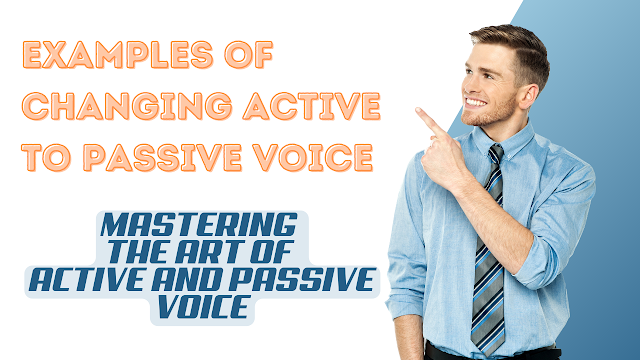 |
| A Journey Through Time: Unveiling the Introduction of All Tenses ⏳📖 |
Verbs are the backbone of any sentence. They convey actions, states, and events, allowing us to express ourselves in various ways. To fully grasp the complexity of verbs, we need to delve into the realm of tenses.
Tenses are the temporal framework that adds depth and context to our language enabling us to discuss actions in relation to time. In this article, we'll embark on a journey to explore and understand the introduction of all tenses (from the simple present to the future perfect).
Table of Contents
- Defining Tenses
- Significance of Tenses in Communication
- Present, Past, and Future Tenses
- Forming Simple Present Tense
- Usage in General Truths and Habits
- Conveying Scheduled Events
- Building Present Continuous Tense
- Describing Ongoing Actions
- Discussing Future Plans
- Structuring Simple Past Tense
- Narrating Completed Actions
- Relating Past Experiences
- Crafting Past Continuous Tense
- Portraying Ongoing Actions in the Past
- Setting the Scene
- Constructing Present Perfect Tense
- Expressing Recent Actions with Relevance to Present
- Describing Life Experiences
- Forming Past Perfect Tense
- Indicating Actions Completed Before a Certain Point
- Adding Depth to Narratives
- Creating Future Simple Tense
- Expressing Predictions and Promises
- Discussing Scheduled Events in the Future
- Developing Future Continuous Tense
- Depicting Ongoing Actions in the Future
- Highlighting Future Activities
- Crafting Future Perfect Tense
- Indicating Actions Completed by a Certain Time
- Projecting Achievements in the Future
Understanding Tenses: A Bird's Eye View
Before we dive into the specifics of various tenses, let's establish a foundation by understanding what tenses are. Tenses are grammatical structures that allow us to indicate when an action or event is taking place.
They give us the tools to express the timing of actions in relation to the present, past, or future. Tenses play a crucial role in communication by providing clarity and context to our statements.
Simple Present Tense: The Now and Everyday Actions
The simple present tense is like a snapshot of the present moment. It's used to talk about actions that are happening right now or actions that occur on a regular basis.
We use the base form of the verb to form the simple present tense . It's also used to express general truths and facts (such as "The sun rises in the east.").
Present Continuous Tense: Actions in Progress
The present continuous tense, also known as the present progressive tense, focuses on actions that are happening right now and are in progress.
It's formed by using the present participle of the verb "to be" along with the base form of the main verb. This tense is excellent for describing ongoing actions (such as "She is reading a book.")
Present Perfect Tense: Connecting Past and Present
The present perfect tense bridges the gap between the past and the present.
It's formed by using the auxiliary verb "have" or "has" along with the past participle of the main verb. This tense is useful for expressing recent actions that have relevance to the present (like "I have finished my homework.").
Simple Past Tense: Unveiling the Past
The simple past tense allows us to discuss actions that have already taken place in the past.
It's formed by adding "-ed" to regular verbs, while irregular verbs have their own unique forms. This tense is perfect for narrating completed actions and events (like "They visited the museum yesterday.").
Past Continuous Tense: Actions in the Past
The past continuous tense, or past progressive tense, puts the spotlight on actions that were happening in the past at a specific moment.
It's formed by using the past tense of the verb "to be" along with the present participle of the main verb. This tense sets the scene and describes ongoing actions (such as "He was playing soccer when it started raining.")
Past Perfect Tense: Delving Deeper into the Past
The past perfect tense allows us to delve deeper into the past. It's formed by using the past tense of the auxiliary verb "have" followed by the past participle of the main verb.
This tense indicates actions that were completed before a certain point in the past (such as "She had already eaten breakfast when I arrived.").
Future Simple Tense: Predicting and Promising
The future simple tense, also known as the future indefinite tense, is all about what will happen in the future. It's formed by using the base form of the verb with the auxiliary verb "will."
This tense is great for expressing predictions and promises, like "They will arrive at the airport tomorrow."
Future Continuous Tense: Actions in Progress Tomorrow
The future continuous tense focuses on actions that will be in progress at a specific time in the future. It's formed by using the future tense of the verb "to be" along with the present participle of the main verb.
This tense paints a picture of ongoing actions in the future (such as "I will be working on the project at noon tomorrow.").
Future Perfect Tense: Anticipating Completion
The future perfect tense anticipates completion in the future. It's formed by using the future tense of the auxiliary verb "have" followed by the past participle of the main verb.
This tense indicates actions that will be completed before a certain point in the future (like "She will have finished her assignment by the end of the week.").
Conclusion
- Tenses are the threads that weave the fabric of language, allowing us to navigate time and express actions with precision.
- By understanding the introduction of all tenses, we open the door to effective communication and dynamic expression.
- Each tense adds a unique layer to our conversations and narratives, enabling us to communicate ideas with depth and clarity.






No comments:
Post a Comment